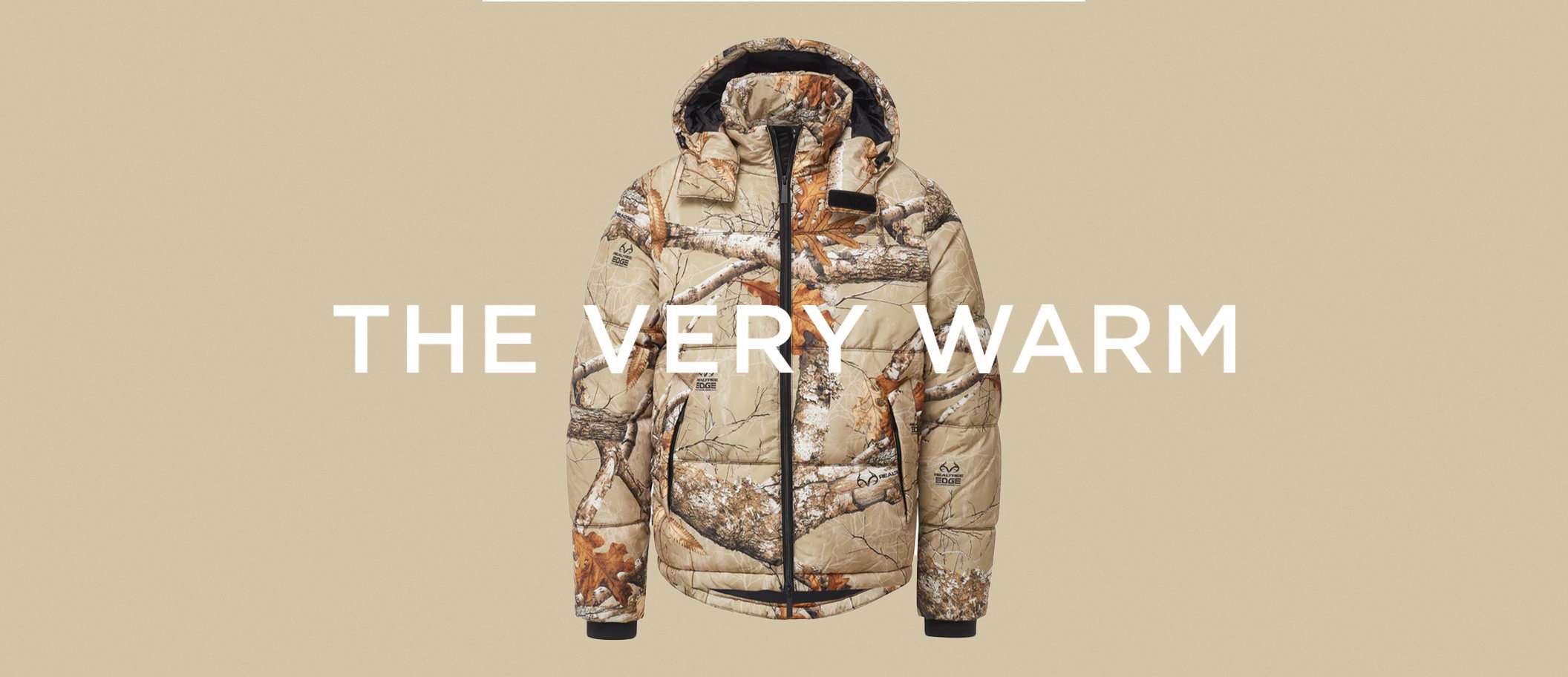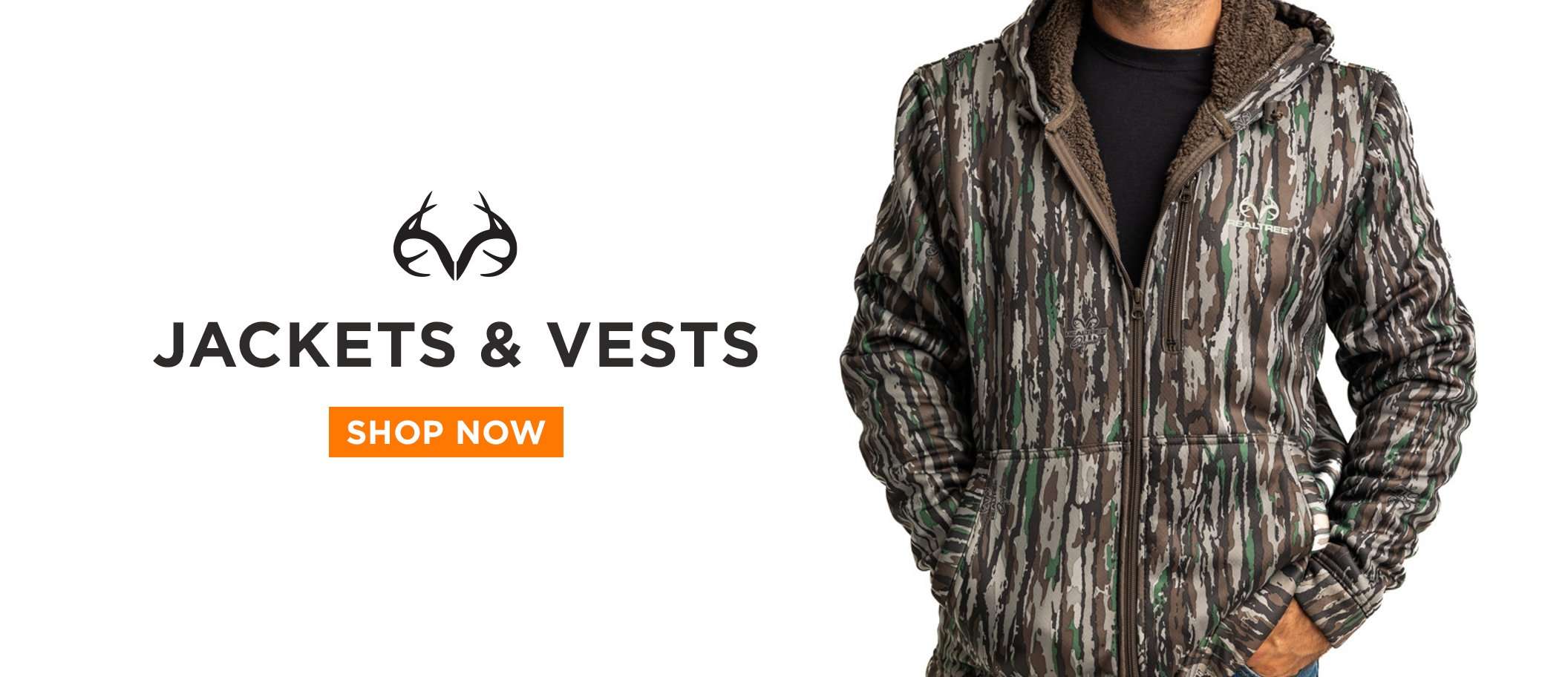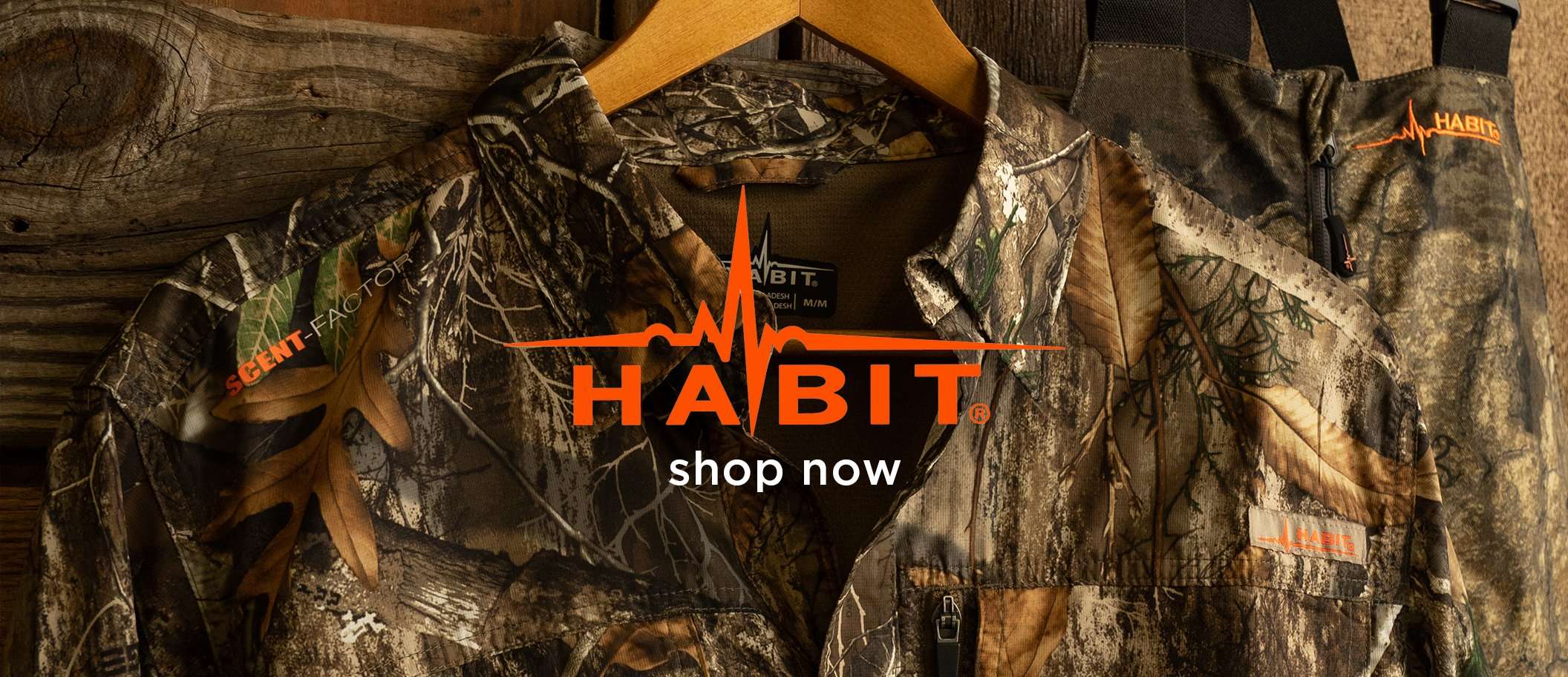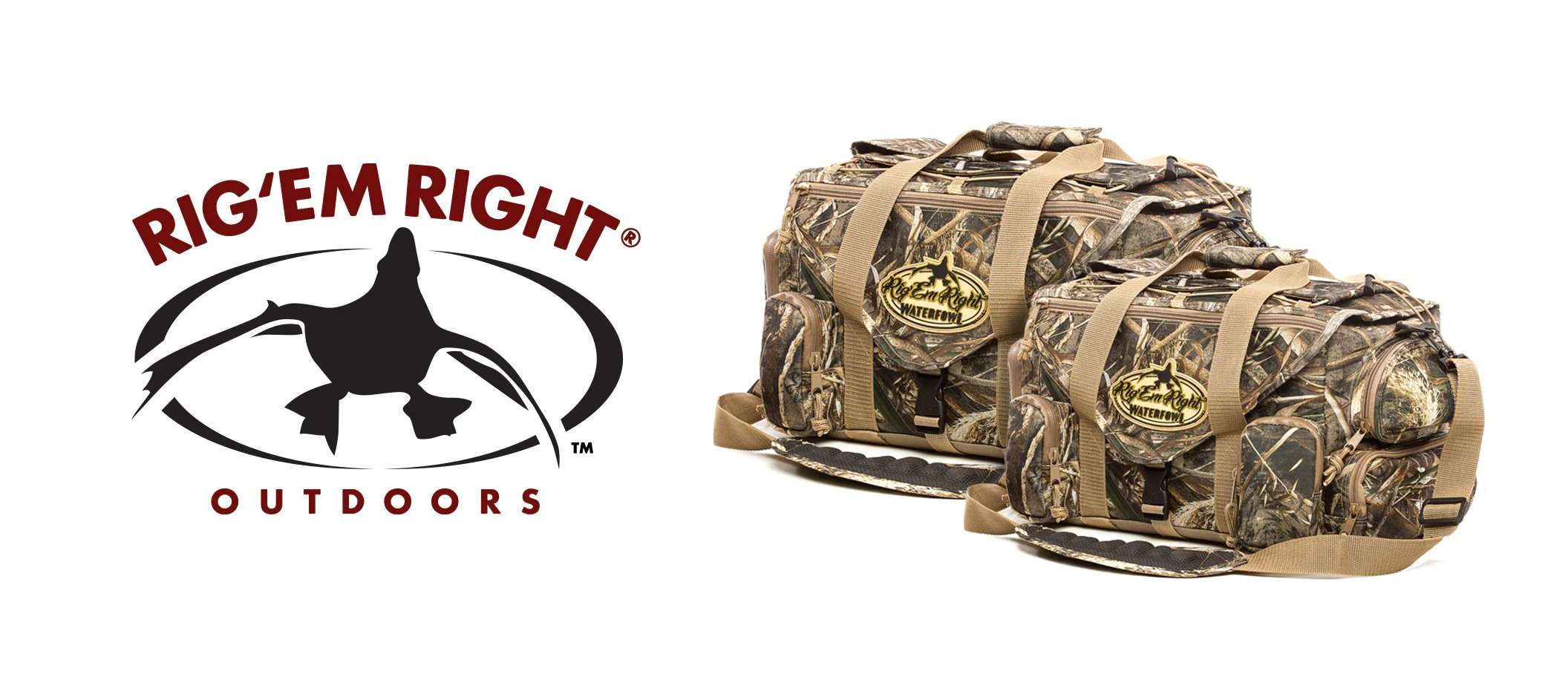Put hand warmers on your wrists to prevent cold fingers, try a heat therapy band around your kidneys, and consider investing in muskox wool
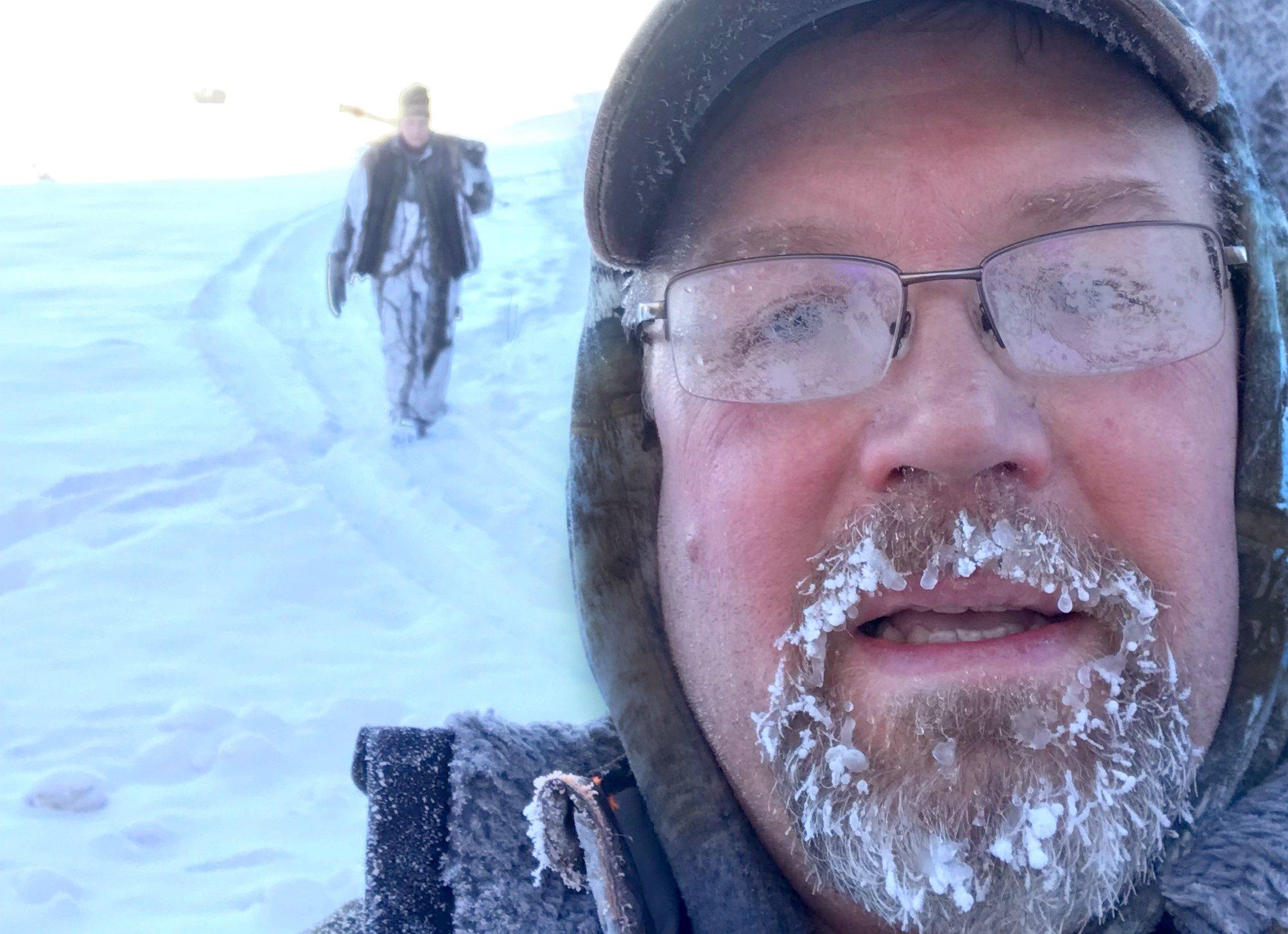
Staying warm in weather like this isn’t easy, but dressing correctly is the first step. Image courtesy of Brad Fenson
The cold bit at my fingers like an angry pit bull as I tightened my snowshoes to my boots. We had over a mile of deep snow to navigate in the dark, hoping to find an elk. The remote and isolated barley field was away from traffic, noise, and most hunters. Elk like solitude, so our extra effort could play a role in success. The snowshoe trek would be fun, but the real challenge would be the -42° temperatures. It does not matter whether you use the Celsius or Fahrenheit scales as they match up at -40. The adventure was more about dressing for success and staying warm while hiking, sitting, and hours in the field.
Years of deer hunting in the bitter cold had taught some important lessons. Knowing how to dress is critical to surviving extreme cold. Besides the high-tech clothing available today, there are some tips and tricks to staying warm.
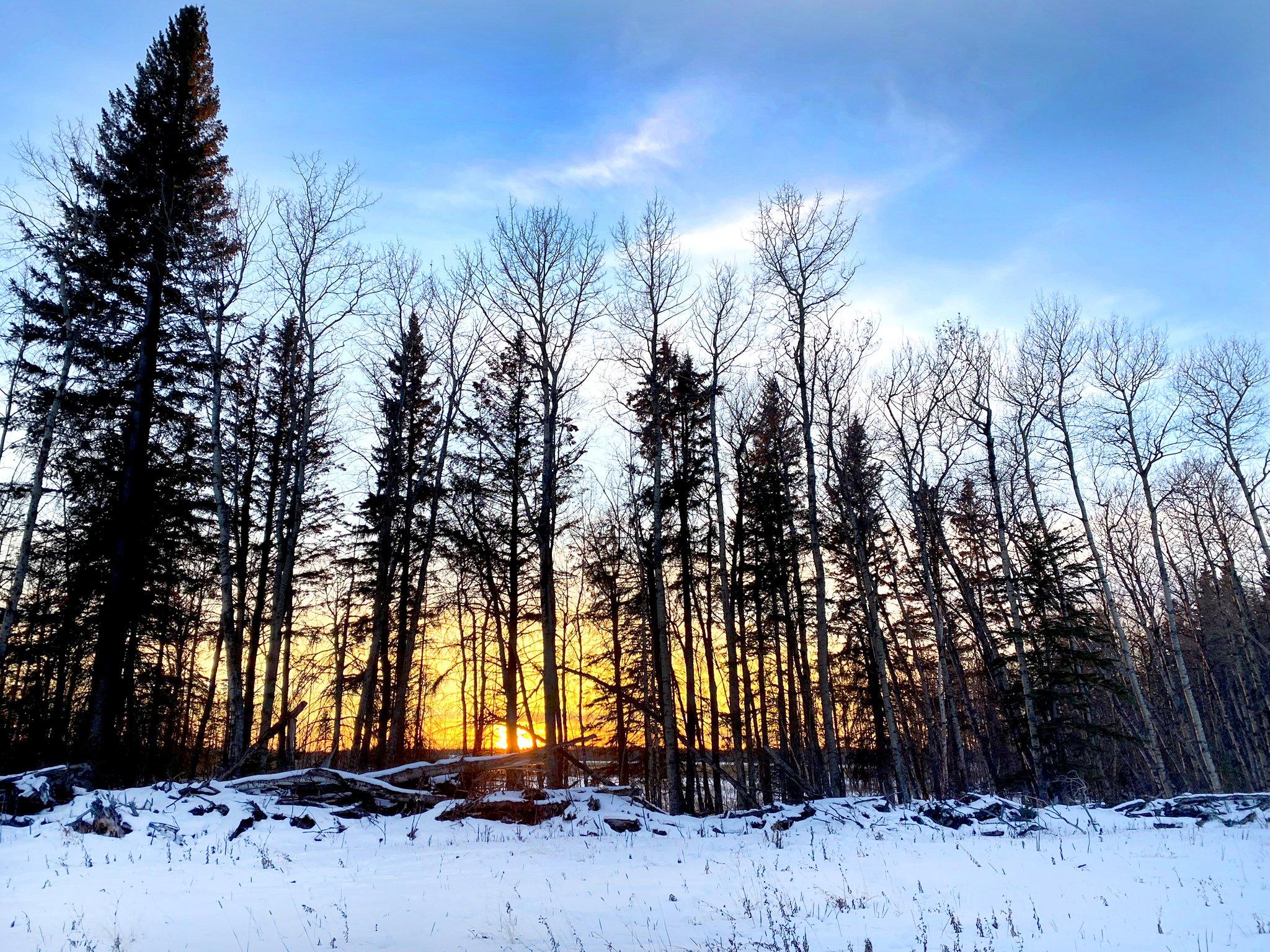
This looks like a day to layer up. Image courtesy of Brad Fenson
TIPS AND TRICKS
- Wear a Toque, Eh
In Canada, most people have a toque, sometimes called a beanie, for winter activities. A toque is a type of stocking cap made of heavy material to keep your head warm and prevent it from losing heat. The bottom edge of the headgear is often folded up, like a cuff or collar. Wearing a windproof layer over the cap can make a major difference. Better yet, buy a cap with a layer of wind stopper. If you feel your head getting cold, activate two hand warmers and tuck them into the cap’s collar to radiate heat back to your body. If you wear a blaze orange cap, you will look and feel like a radiant heater.
- Hand Warmer Tricks
Hand warmers are great inventions that are air-activated and deploy heat for 8 hours or more. The warmers come in different sizes, with models to stick in the toes of your boots to keep your feet warm and larger units for placement on the body. The use of warmers is smart, especially when placed for maximum advantages.
Most people place hand warmers in their mitts or gloves. However, the best place to deploy them is in the wrist area, allowing them to heat the blood flowing to your hands. Place the warmer under a wrist cuff to hold it tight in place. Instead of trying to heat cold fingers, keep them warm from the start. Warm wrists, arms, and hands are easy to maintain when keeping the blood flow warm. Always activate warmers 30 minutes before heading outdoors to produce maximum heat before you need it. If you wait until you get cold, feeling the benefit will take too long before your fingers beg you to get out of the cold.
If you tend to get cold, put warmers in your pants pockets, which will radiate heat down your legs. You can slide your hands into your pockets for instant heat if your hands get extremely cold.
Larger warmers, four to six inches square, are ideal for placing on your back in the kidney area. Another can be placed in the middle of your chest. The adhesive on the warmers allows you to stick them to your base layers and not directly on your skin.
Use toe warmers only if they do not make your boots fit tight, as they can work against you. Warmers in your boots cannot access much air and can be challenging to heat up if placed in boots before they are hot. When starting with hot feet, use sock liners to draw perspiration off your toes.
Don’t Miss: DON’T KID YOURSELF: WEATHER AND MOON MATTER FOR DEER HUNTING
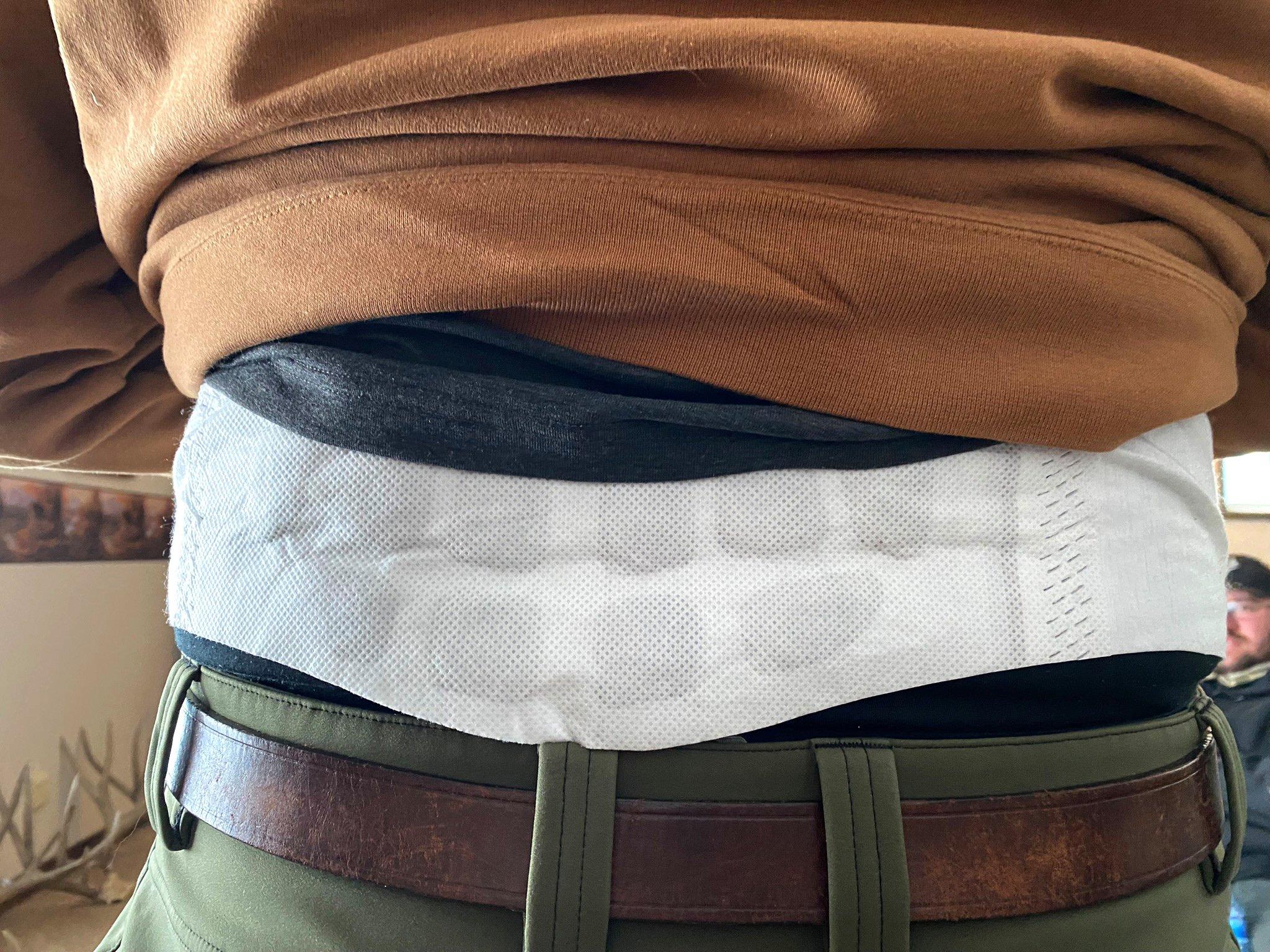
A heat therapy belt worn around the lower waist can work wonders. Image courtesy of Brad Fenson
- Try a Heat Therapy Belt
Most pharmacies will carry heat therapy for sore backs. The belts are similar to warmers designed to fasten around the waist and provide constant heat to your back. Long sits in northern Saskatchewan, where it is challenging to stay in the cold from sunrise to after sunset, is where I learned the benefits of therapy heat belts. Several brands are available online or in the stores, so pack one for each day you could face cold in any adventure. Starting and maintaining core temperatures and heat on your kidneys makes a significant difference in being comfortable all day.
- Eat Some Bacon and Eggs
Before heading outdoors on any cold day, put fuel in your tank. You might get away with skipping breakfast on a warm day, but the cold will eat you if you start calorie-deprived. Save the diet plans for when you get home and eat to generate heat.
Early settlers and trappers ate a big breakfast that included fats and protein. First Nation and Inuit people in the far north ate lots of fat and would seek it out for consumption. Consuming fat was the best way to deal with cold and generate heat. Helping on a trapline one winter, the old trapper I shared a cabin with would spread lard on his toast and stir butter into his coffee. I thought it was strange at the time, but understanding how fat helps generate heat through your digestive system makes sense.
Bacon and eggs with toast and peanut butter are a great way to start a cold day. A few carbs will provide the energy to face the day with enthusiasm. Eat before heading out to ensure your body generates heat when needed. Use real cream in your coffee and butter on your biscuits or bread.
- Bring Hot Drinks
A fishing adventure in the Yukon took a drastic turn when a storm blew in and soaked us with pouring rain. We headed for shore and ended up on the opposite side of the lake from our vehicle. With wet skin, clothes, and darkness quickly eating the western sky, we built a fire, boiled water, and drank what we could hold. The hot water was a blessing that warmed us from the inside and eventually eliminated the shivers.
The canoe adventure was a great lesson for carrying hot beverages on cold days and surviving long days on stand. A proper thermos will keep liquids hot for a day. If you feel the cold taking hold, drink something hot, and you will immediately feel the difference.
Preheat your thermos and use boiling water when making a beverage to help it keep liquids as hot as possible. Do not use a drip coffee maker to brew extremely hot beverages; microwave your coffee or bring it to a boil to raise the temperature if required.
- Flex and Wiggle
Sitting in a blind or treestand can be daunting in the cold. Sitting motionless for hours on end allows the cold to creep in and can force you to retreat to warm up. Exercise your mind and body by creating a flex and wiggle routine. Start with your toes and flex and wiggle them every 10 minutes. Do the same with your fingers. Flex them backward as far as they go, and hold them. Practice squeezing your chest with your elbows, push your knees together, and hold for 10 to 15 seconds. The muscle movement increases blood flow and helps to generate and maintain heat. It can be challenging but try to wiggle your ears. Moving your ears and scalp is a great way to ward off cold and might help you develop some party tricks for down the road. When you finish a round, start over again; the cold will never set in. Do not get too focused on the flex and wiggle, and remember to maintain your focus for a big buck.
Don’t Miss: SECRETS FOR KILLING MATURE WHITETAILS
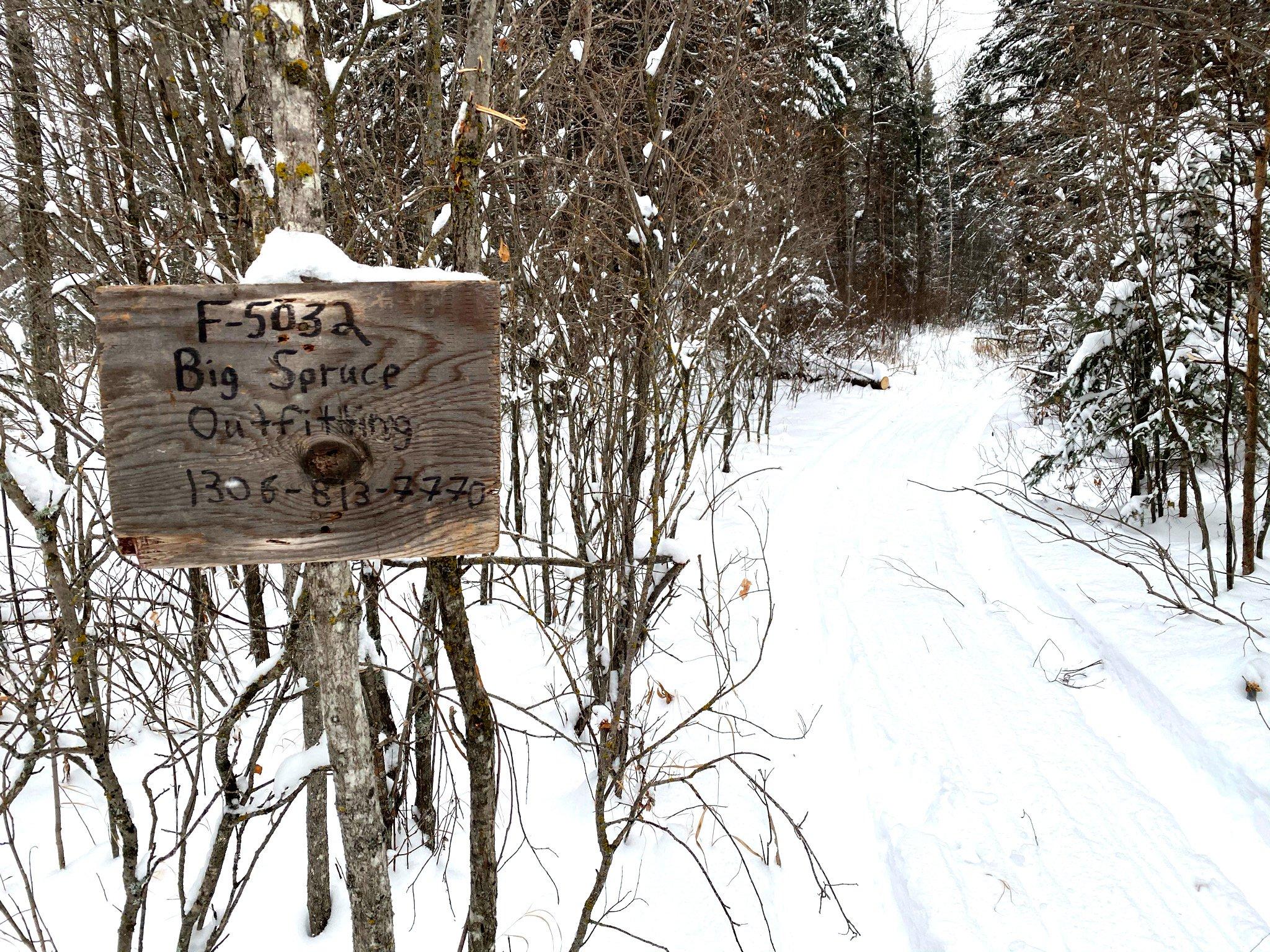
Staying warm in a deer stand in northern Canada is about more than just being comfortable; it’s a matter of life and death. Image courtesy of Brad Fenson
- Try Muskox Wool
On an Arctic adventure for caribou, my fingers kept getting cold. My Inuit guide chuckled as he walked to a large rock on the ridge and found some muskox wool rubbed off the previous spring. The wool bundle was small, but I placed it in my jacket pocket and plunged my fingers into the soft material. In less than 10 seconds, I could feel heat return to my digits. It was magic!
Inuit have long used the fine wool undercoat of muskox, thought to be the highest-quality fiber in the world. The wool, or qiviut, is soft, fine, and warm. Qiviut is said to be eight times warmer than sheep’s wool and as soft, if not softer, than cashmere.
If you search online, muskox farms in North America have qiviut available. Some hunter and trapper organizations, online stores, and boutique outlets in the North sell gloves, caps, scarves, headbands, and vests made from qiviut. It is a remarkable substance that will keep you warm when nothing else works. Garments and gloves are thin, or the user will overheat. A thin pair of gloves can be worn inside your regular gloves, and the difference in heat is hard to believe. Most vests made are extremely thin, as any weight in a garment would make it too hot to wear. If you suffer from cold and can never keep warm, the extra expense for muskox wool will be worth it.
- Ember Hand Warmer
Specialty products are produced to help hunters stay in the field longer and enjoy any adventure, even in the cold. ALPS OutoorZ has a new product called an Ember Hand Warmer. It is worn around the waist and is easy and intuitive to slip your hands into when they get cold. There are several layers of fabric, fleece, waterproof material, and a suede interior. The unit is designed to be quiet and ensure the deer do not hear a thing when your hands are slipped in or out. Hidden cuffs keep the elements out and the warmth trapped inside.
Fingers are often the worst culprits for getting cold. A quick and easy way to warm them is to place them inside your jacket and tuck them into your armpit. Your torso is one of your body’s warmest places, so use the furnace if required. Now, you can use an Ember, keep your jacket done up, and save your armpit for emergencies only.
- Power Up
There are battery-operated socks and gloves to help keep hands and feet warm. Power syncs are used to heat vests and jackets to keep warm. The modern conveniences are great and can be a game-changer for some. However, do not become reliant on batteries and always dress for the worst scenario. What happens if the heating system fails and you are left to face the cold? Go equipped to beat the cold without power, and if you do face challenges, you can fire up the battery-powered equipment to save the day. Do not let the power become a crutch that could create an issue and leave you unprepared to face the cold alone.
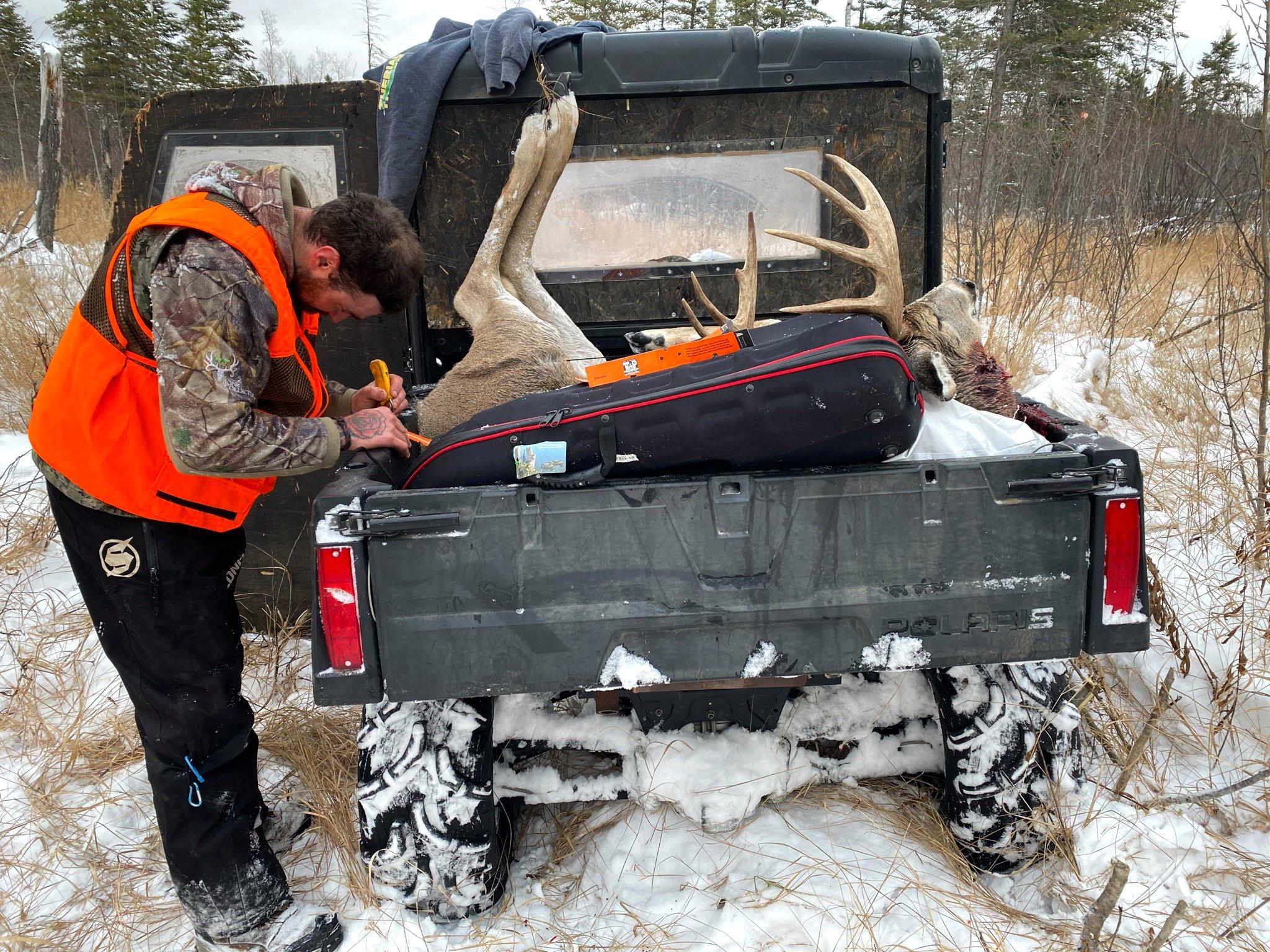
Success is earned, which includes knowing how to stay warm. Image courtesy of Brad Fenson
HEAD TO TOE, HERE WE GO!
Layering clothing is the best way to beat the cold, and modern technologies provide options for being active or sedate. It is important to know the names and jargon to understand how the different fabrics, materials, and clothing designs work to manage moisture and control heat. Knowing layering basics will help you navigate the products available and the high-tech names used to market and describe them.
Base layer: If it is going to be cold, you need a base layer. Long underwear and a long-sleeve undershirt are where your heat management begins. Most base layers will be polypropylene or polyester, but some great wool options exist. Smart wool or Merino wool will not itch like virgin wool, so pay attention to the labels. The base layer fabrics will wick moisture off your skin and dry quickly. The moisture management system keeps your skin dry and pushes moisture to the next layer for evaporation and escape. Base layers are available in different weights. Thin layers are used for active hunters, and the medium and heavyweight options are best for people susceptible to the cold or sitting for periods when the cold can overtake your system. The best advice is to avoid cotton, which does not wick moisture but holds it, meaning you will be damp and cold for your entire outdoor experience.
Mid layer: Mid-layer insulation always traps body heat and keeps you warm when dealing with cold. Common materials include fleece, wool, or down shirts or pullovers. Clothing with lots of pile increases the insulation value of the garment. You want the mid-layer to trap and hold your body heat but not be too bulky. Multiple layers can be used to include a vest, and if you tend to get cold, double down.
Outer layer: The wind and elements can provide the biggest challenges for staying warm. Use a parka and bibs to break the wind and trap heat. Make sure the outer layers can protect from wind and moisture. Bibs should cover your lower back and kidneys. The design prevents heat from escaping between layers. If you plan on hunting, make sure to find quiet material.
Extremities: Your extremities, feet, hands, and head will get cold first and are a major source of heat loss when not covered and insulated. Layers are just as important for feet and hands. Look for quick-drying, moisture-wicking socks and glove liners. Top them with heavy Merino wool socks and waterproof, wind-resistant, insulated gloves. Make sure to maintain a little air space in your boots as insulation. Tight boots make cold feet.
Head and neck: You can lose up to 90% of your body heat through your head. Wear an insulated cap that covers your ears and comes down your forehead. A neck gaiter will help prevent heat loss around your collar and work with your clothing layers to maintain heat. It can also be used to cover your face.
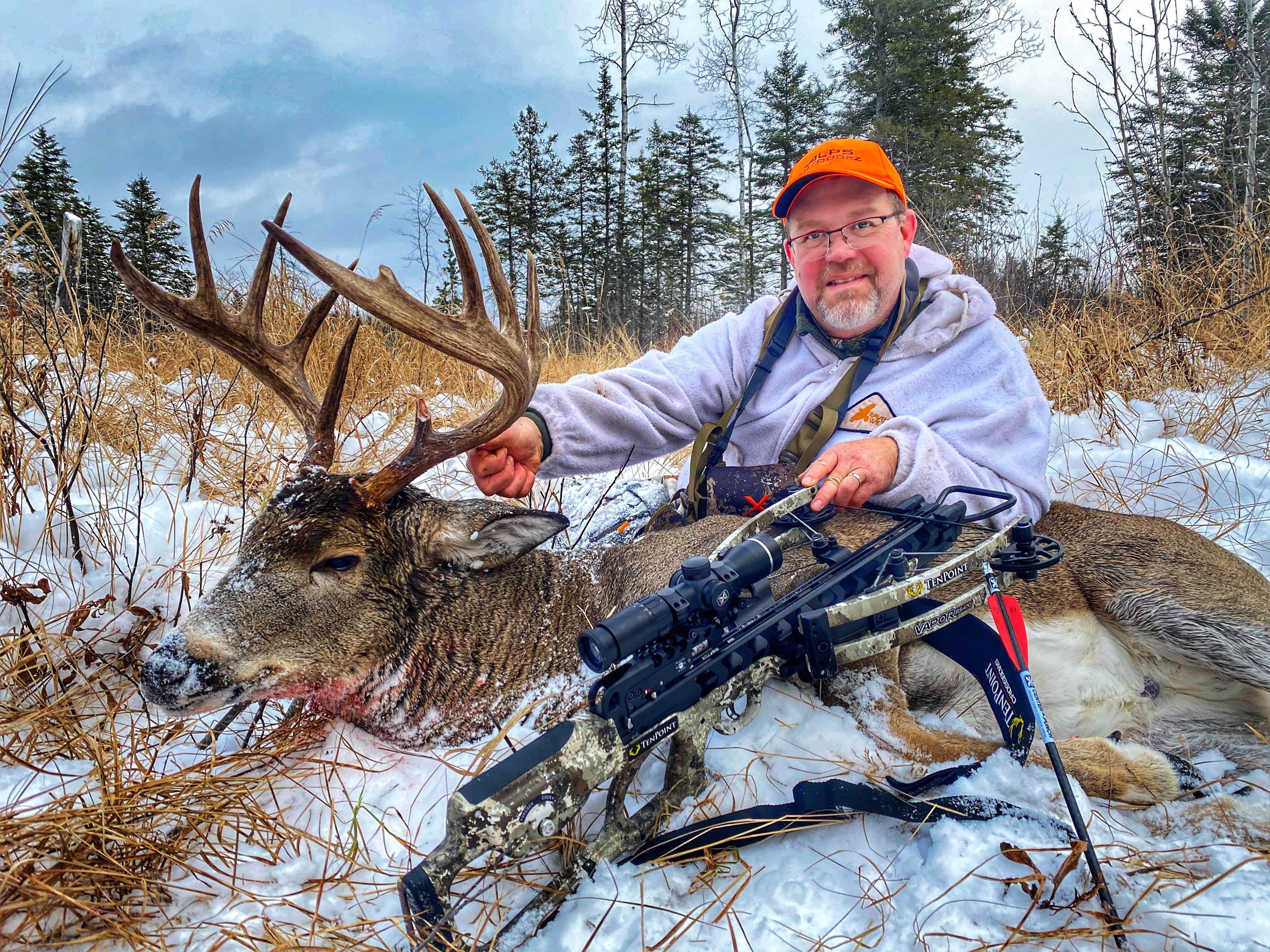
The author poses with a cold-weather buck. Image courtesy of Brad Fenson
Modern clothing is highly technical and advanced from what our grandparents had available. Wool suits were the norm in the 1950s and 60s. However, today, many manufacturers build exceptional clothing and systems that keep you warm in any condition. Embrace technology and plan to outfit yourself to sit until you fill your tag.
Don’t Miss: WHAT’S UP WITH ALL THESE BUSTED AND BROKEN DEER ANTLERS?

